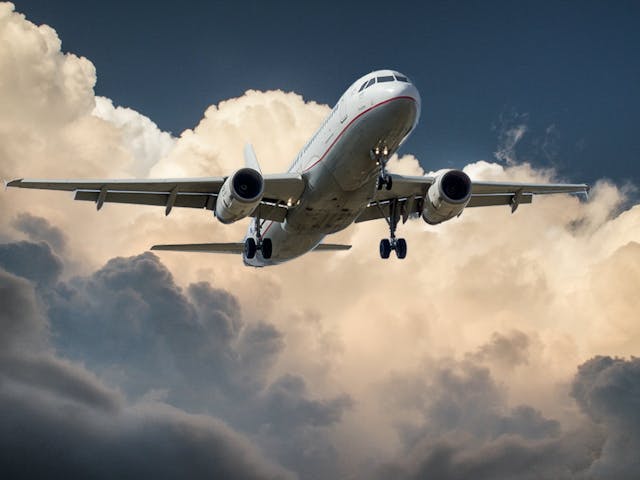Commercial aviation is equated with luxury, adventure, or advanced technologies, but behind the shiny appearance, the world of keen strategy, impeccable business activities, and the abundance of secrets hidden behind walls of secrecy and specifically not told to the passengers are there. These backstage performances, practices, and tastes offer a larger perspective of the professionalism and skills needed in flying an airplane in the current traffic-fragmented airspace.
Pilots Rarely Rely on Autopilot Alone
Avionics such as autopilots have enhanced the aviation sector because pilots can fly long distances with a lot of ease. Nevertheless, as opposed to the popular misconception, the airplane is not flown by itself when on autopilot. Pilots should also be equipped to always be vigilant, checking different instruments, altering flight patterns, directing them to do so in instances by the air traffic controllers, as well as being ready to take manual control at any time. Autopilot should mainly be used to help in determining altitude and direction, yet the pilots remain very active in keeping track of directions, fuel amounts, and even communicating with ground control.
Pre-Flight Checks Are More Extensive Than Passengers Realize
Pilots conduct thorough checks before any airplane takes off, and the public does not realize them. Such pre-fly briefings are quite meticulously made. They begin by looking at the weather, calculating the amount of gasoline required, and studying the route. Then, they proceed to thoroughly inspect the outside and inside systems manually in the plane. Pilots examine everything, including the tires and the state of the wings, down to the efficiency of navigation systems. The collaboration with the ground crew and maintenance engineers ensures that before boarding, everything that could go wrong has been addressed.
Flight Plans Are Adjusted Even While in the Air
Most individuals will expect after filling out a flight plan and getting it confirmed that the flight will take a set route between its destination and origin. Indeed, professional pilots usually modify the plane when it is airborne so that it is safer and more functional. These variations can be due to the changing weather, turbulence, excessive air traffic, or even the decision to save fuel. Pilots are always in contact with air traffic control, which can inform them that they can either switch their course or change the heights on high-tech equipment on the plane. To be able to make such modifications, you must be quick to decide and know a lot about navigation and weather conditions.
Fuel Calculation Is a Complex Science
Putting out an airplane cannot be compared to putting out petrol in a car. The drivers (pilots) need to perform an estimate of the amount of gas needed according to some well-considered parameters, i.e. the weather, air traffic delays, other potential landing spots/airports, the weight of the aircraft, and even headwinds or tailwinds. Commercial pilots cooperate with their dispatch members to ensure that fuel is dispatched with a cushion in case anything happens. Modern planes are also fitted with real-time monitors that aid in tracking the consumption of fuel and informing the pilot of any faults that can occur.
Pilots Use Aviation-Grade Materials to Maintain Optimal Performance
Lubricants and fluids in commercial airplanes must be of high quality so that when in operation, the airplane is at integrity with varying altitudes and temperatures. Among the secrets that are not very popular in the world of aviation, they indeed utilize military-grade products that fall under defined performance specifications. The selection of these materials is done because of effective management withstanding harsh conditions, ensuring that the parts of the plane endure a long period. Specialty lubricants are used due to two reasons: thermal stability and oxidation resistance. Using high quality Hydraulic fluid such as MIl-PRF-87257 will make sure that not only maintenance teams will be able to keep up with the aviation industry, but also pilots will be able to satisfy its challenging demands.
Not All Emergencies Are Shared with Passengers
Commercial pilots are trained in how to handle problems like rapid weather changes or mechanical problems. All these issues are, however, not all revealed to the passengers. This was decided upon the fact that the cabin should be cool, and the flight crew handling the matter should not be irritated or be a problem. As an example, once a plane experiences some minor mechanical problem or turbulence, the pilots can quietly attend to the problem and proceed with the flight. It is selected in most cases to notify the passengers when there is a risk that their safety or travel plans can be at stake.
Conclusion
Commercial pilots learn much more than the process of carrying a plane between two points. Their world is run by protocols, accuracy, and constant evaluation, and passengers can barely see through any of that. There are various processes that pilots undergo by doing pre-flight maintenance checks of their aircraft, calculating the amount of fuel needed with the accuracy of a scientist, modifying the route of a flight in mid-air, and operating under military-level materials. Each journey is a product of years of practicing, a split-second decision-making process, and collaboration with numerous other transportation specialists.



